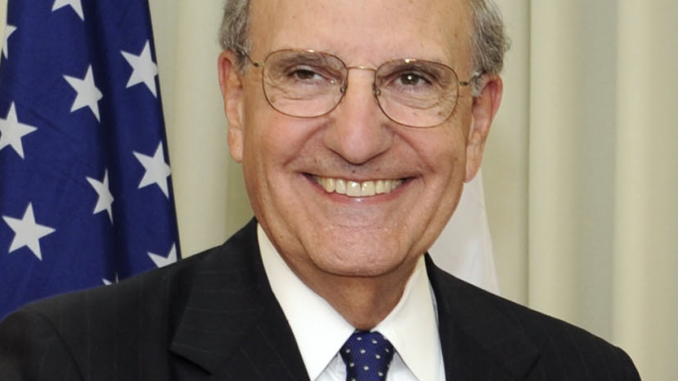
The biggest scandal in MLB over the last two decades has without question been players abusing performance enhancing drugs (PEDs). Perhaps the most critical moment of this scandal was the release of the “Mitchell Report” on Dec. 13, 2007.
The report, officially named the “Report to the Commissioner of Baseball of an Independent Investigation into the Illegal Use of Steroids and Other Performance Enhancing Substances by Players in Major League Baseball,” was written by former Democratic Sen. from Maine George J. Mitchell and was the culmination of his 20-month research into the use of PEDs in MLB. The report covers the use of PEDs by players, the effectiveness of the MLB Joint Drug Prevention and Treatment Program and how illegal drugs were handled by MLB in the past and some recommendation for how to better handle them in the future. But the biggest takeaway were the 89 MLB players that were named in the report for using PEDs.
Mitchell explained in the report that his hope was that readers would not focus on the players listed and instead be concerned about how to better handle the situation moving forward. At no point during this scandal has that ever been the case. The public is much more concerned about finding out who used PEDs as opposed to solving the problem.
The argument can be made that this was the case with Mitchell as well, despite his claims. He was a director for the Boston Red Sox at the time of his investigation, and no high profile Red Sox players were listed in the report. David Ortiz and Manny Ramirez, two star sluggers on the team, were later accused of using PEDs by a New York Times article in 2009. If Mitchell didn’t want the focus to be on the players he listed in the report, why would he have omitted two high profile star players who may have very well used PEDs? In addition, then-MLB Commissioner Bud Selig, who appointed Mitchell to lead the investigation, was a former owner of the Milwaukee Brewers and, like the Red Sox, there were no high profile Brewers players in the report.
Even if Mitchell wrote the report with the best of intentions, why list any names in the first place if he didn’t want the public to focus on the specific players using PEDs? There is no debate that there were players who used PEDs and were not listed in the report. The two sources Mitchell got most of the 89 names from were Kirk Radomski, a former batboy and clubhouse employee for the New York Mets, and Brian McNamee, a personal trainer who alleges that he gave PEDs to most of his clients. There is no way Radomski and McNamee would have communicated with every single MLB player that used PEDs, ensuring that some players would get away with their drug use.
That’s the biggest issue with this scandal: there is no way we are ever going to know the names of every single player that used PEDs. We can assume certain players did if their home run totals spiked upwards at an age that normally signals the decline of a player’s abilities, or if a player suffers health conditions that coincide with the use of PEDs. But there’s also the possibility that a player just found what works best for them without the use of PEDs, be it a specific type of swing that took years to cultivate, a pitching delivery that allows them to maximize their abilities or even a matter of location; some player thrive in big markets while others don’t. Baseball players didn’t start performing well until the later stages of their careers long before PEDs were a thing. It’s a shame that some players will always be accused of using PEDs just because they were good players at the same time that other good players were using PEDs.
Ten years since this report was released and not too much has changed. Yes, MLB has made the consequences of using PEDs much more dire, but we still see players using them and getting suspended on a yearly basis. There is also now the issue of whether or not players accused of using PEDs, such as Barry Bonds and Roger Clemens who were listed in the “Mitchell Report”, should be voted into the National Baseball Hall of Fame and Museum. And just like 2007, the focus isn’t on how to prevent further usage of PEDs in MLB, it’s on the players that were caught so we have scapegoats to point our fingers at.
It’s very possible that this is going to be a never-ending war between MLB trying to get rid of any players who use PEDs and players who are looking for an advantage without getting caught. But some players may use PEDs due to a lack of proper training and the right personal trainers may steer players away from drug abuse. Is that just speculation? Yes, but at the very least it’s with the intention of lowering PED usage as opposed to speculating who used them.
This issue is never going to be fully resolved, as long as there are PEDs there will be players who will use them and no one seems to know what to do when it comes to PED users being in the Hall of Fame. But at the very least, the focus should shift from who used them to what can be done to lessen its usage in the future. That is the focus today, and it was the focus when the “Mitchell Report” was first released a decade ago.
